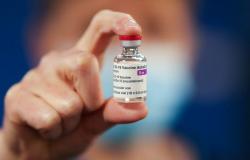Thomas Edison, one of the greatest inventors of all time, said that the doctor of the future will not give medicines but will motivate his patients to take care of their bodies and prevent diseases. A century later that type of doctor who has the time to listen to his patients has not yet been seen. It would be enough for patients to be able to have at least assistance worthy of the name from their general practitioner, who is the first contact when they have a health problem. The healthcare system is put to the test by insufficient fundingwith a shortage of hospital specialists where they are needed, and waiting lists that push citizens to pay out of pocket for at least 4 visits and 2 diagnostic tests out of 10. And those who cannot afford it too often give up treatment. In this context, the figure of the family doctor is an essential point of reference, but they are few, not valued in their role and not adequately trained to respond to the needs of an increasingly elderly population with chronic diseases. Family medicine needs to be redesigned and, today, there is a good opportunity because after 50 years we are faced with the greatest generational change.
Who enters and who leaves
In the next six years, out of 37,860 family doctors in service, 12,600 will retire. That is one in 3. In the same period the estimate is that 10,714 will enter. It means that the entrances will not cover the exits, and already now each general practitioner (GP) is responsible for 1,399 patients compared to 1,171 10 years ago (here 10b3). It’s time to start thinking about it now to invest in a profession that is the first filter to the clogging of emergency rooms, and which for years has been guiltily relegated to the B series. What to do? Let’s see it point by point by following them in their career: from when they start studying Medicine, to when they go to work in their clinic.
Profession without appeal
First of all, young graduates should be encouraged to become family doctors, which doesn’t happen today: 78% of medical students during their 6 years of university do not even have the opportunity to learn about the work of a general practitioner because the universities do not provide targeted lessons or internships or the presence of GPs at the courses. Once you finish your university studies, The economic differences between those who attend the three-year training course to become a family doctor and those who attend a specialization school to become a surgeon, cardiologist, orthopedist, etc. must be eliminated.. The course for GPs, which is not university but depends on the Regions, is paid for with a scholarship of 11 thousand euros per year, i.e. 966 euros per month, subject to Irpef, with contributions paid by those who attend it and no allowance in case of maternity. The situation of hospital residents who have a scholarship of 26 thousand euros a year, contributions included and without Irpef, is very different. This already indicates the lack of consideration for the general practitioner. The consequence is that if new graduates in Medicine have an alternative they usually prefer it: the numbers show that the more the number of places in specialization schools increases, the fewer candidates there are for the three-year training course to become a general practitioner. Indeed if in 2019 with 1,765 scholarships there were 4 candidates for every available place, in 2023 with 2,596 places there were 10 Regions (such as Lombardy, Piedmont, Veneto and Tuscany) they were unable to cover all the scholarships and 347 were unsuccessful.
The training course
What happens when young doctors arrive at the three-year training course? The program of activities is regulated by rules from 18 years ago (ministerial decree 7 March 2006 here) which in the 1,600 hours of theory does not provide information updated with the times: from work in community houses financed by the Pnrr, to the use of equipment for first level tests (spirometers, ECG, ultrasounds), etc. Since 2018, GPs in training can work in the clinic with their own patients (here art. 9), and from 2020, the hours of work in the clinic will be counted towards the 3,200 hours of practical training without actually having any tutor (here). It is a paradox because in essence it is like admitting that the course is of little use. The solution may be to transform the family doctor’s training into a real specialty, following the example of European «Family medicine» schools. This, in all likelihood, would raise the level of the profession, making it more attractive for the best graduates, and would also be removed from the control of the lobbies of the powerful doctors’ unions who, today, manage the training schools and have every interest in maintaining the status quo (see Dataroom of September 2022).
The services offered
Then, when the family doctor enters his own practice, he must be able to offer patients services in line with their growing needs.. Let’s take as an example a patient with a chronic cardiovascular disease. Today he goes to the family doctor who makes him a referral for a cardiological examination and an electrocardiogram. The patient must then go to Cup to make the reservation, wasting time on the waiting list. If, however, the doctor had an electrocardiograph and was trained to use it, he could monitor it directly and send it to the specialist only in case of critical issues. A patient with suspected renal colic is examined today and the family doctor can prescribe a painkiller and send him for an ultrasound. If instead he had an ultrasound available he could evaluate whether there is a stone and start a therapy. On 28 January 2020, 235 million euros were allocated to provide GPs with the tools for first level exams (here), but nothing has yet been purchased. Probably also due to the resistance of older people who claim not to know how to use them, while 70% of young doctors believe it is important to be able to perform these tests.
The relationship with the National Health Service
Finally we come to the question of questions: What relationship should family doctors have with the health service? For years they have been freelancers affiliated with the NHS and their activity is regulated by a contract signed by the unions, but an important part of the young people asks to become employees. In fact, there is an outcry never seen before against the new national collective agreement of 8 February 2024. The reason is that according to the new rules, those with fewer than 400 patients, therefore the vast majority of young family doctors, are called to make 38 hours a week available to the local health authority to do medical on-call or similar activities compared to 6 hours for those who have 1,500 patients, i.e. the older ones. Young people are convinced that they will find themselves with all the disadvantages of freelancing (finding a replacement and paying for it in case of illness or vacation) and also those of dependence (you no longer have a way to manage your time because you are forced to do what he says the ASL, with a certain number of hours as a medical guard). At this point some of them ask to make the profession 100% dependent, with all the guarantees that this entails (illnesses and holidays covered, etc.). The Fimmg which represents 62.8% of family doctors registered with a union is against it, as he does not look favorably on entering Community Houses. The status quo allows GPs to continue to do work outside of the clinics and therefore earn more. Young people, on the other hand, are the workforce that could go and work there, provided that politics is able to involve them. In recent decades this profession has frayed, local assistance has become impoverished, demand is growing exponentially, technology has made progress: for all these reasons the approach must be changed. And the moment is propitious, precisely because we are faced with a generational transfer.
Tags: Family doctor doesnt work Heres change Milena Gabanelli




